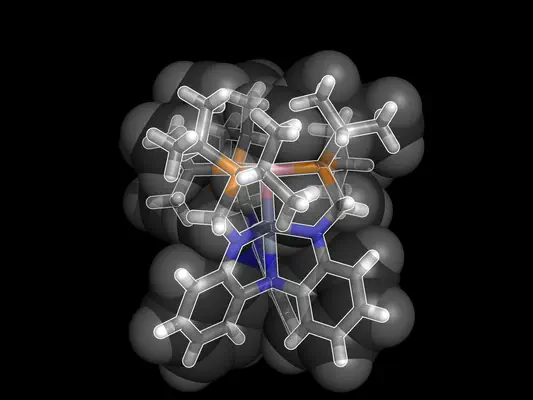Deciphering Cryptic Behavior in Bimetallic Transition Metal Complexes with Machine Learning

Abstract
We demonstrate an alternative, data-driven approach to uncovering structure–property relationships for the rational design of heterobimetallic transition-metal complexes that exhibit metal–metal bonding. We tailor graph-based representations of the metal-local environment for these complexes for use in multiple linear regression and kernel ridge regression (KRR) models. We curate a set of 28 experimentally characterized complexes to develop a multiple linear regression model for oxidation potentials. We achieve good accuracy (mean absolute error of 0.25 V) and preserve transferability to unseen experimental data with a new ligand structure. We also train a KRR model on a subset of 330 structurally characterized heterobimetallics to predict the degree of metal–metal bonding. This KRR model predicts relative metal–metal bond lengths in the test set to within 5%, and analysis of key features reveals the fundamental atomic contributions (e.g., the valence electron configuration) that most strongly influence the behavior of these complexes. Our work provides guidance for rational bimetallic design, suggesting that properties, including the formal shortness ratio, should be transferable from one period to another.